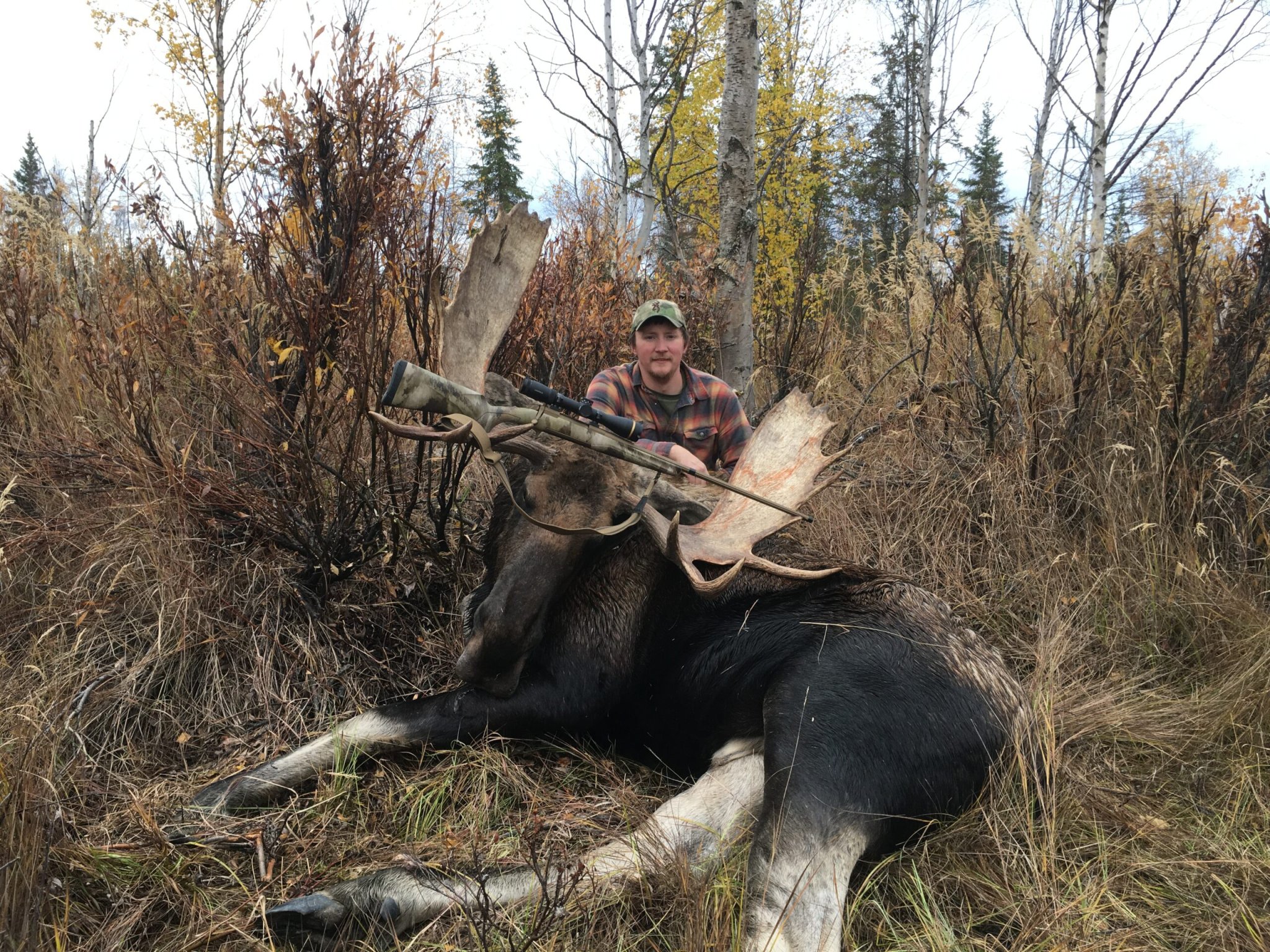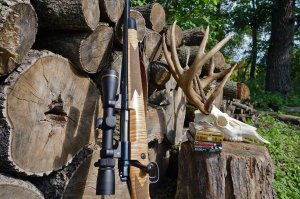We may earn revenue from the products available on this page and participate in affiliate programs. Learn More ›
It’s easy to neglect your hunting rifle in the doldrums of summer when hunting season feels so far away. But trust me, it will be here soon. Before you know it, you’ll be standing over a disorganized pile of gear the night before opening day wondering how the hell you’re going to have everything ready and praying you’re not forgetting anything important (ask me how I know). Almost as bad, you might find yourself among scores of other procrastinators flailing about on the rifle range the day before the opener—digging for a penny in your floorboards to adjust your scope and scratch out an adequate zero.
I know as well as anyone how summertime can evaporate more quickly than a dousing of DEET in an Alaskan black spruce thicket in June. So learn from my mistakes and follow this pre-season checklist to get your rifle ready for hunting season. If you follow these steps at least once a year, you can have much more confidence in how your rifle will hold up over time, and know that it’s going to work when you need it to.
Deep Clean Your Rifle
This should really be done after any exposure to harsh weather, dirt or mud, but most of the time hunters just wipe their rifles down in camp. So every hunting rifle should get a deep clean before hunting season. All-weather hunting rifles with high-tech coatings and stainless-steel parts are certainly more resistant to corrosion, but they need to be maintained too.
Make sure you have a torque wrench and the correct driver bits handy, and then disassemble your rifle. Don’t fully-strip down trigger mechanisms or fire control groups unless you’re very comfortable doing so. But you should pull off the stock for thorough cleaning. Rifles tend to accumulate dust and grime in places that are obscured by the stock, and sometimes unwanted rust and corrosion can be hiding inside the stock. On blue-finished rifles, I’ve pulled the stock after some rain exposure to find spot rust forming everywhere I couldn’t reach with the stock on. If you catch it early, you can stop it. Once clean, coat the exterior of the action and barrel with a light rust inhibitor.

If you can, strip down your bolt and other action internal parts so you can degrease and re-lubricate them. The inside of a rifle’s bolt often accumulates quite a bit of grime, which is easily removed with aerosol cleaner. Brake parts cleaner works, but I also like using products like gun scrubber, carb and choke cleaner, or electrical parts cleaner as they generally aren’t as harsh on finishes and evaporate quickly. After degreasing, lubricate with the oil of your choice. If you will be hunting in sub-zero temperatures, you might not want add oil at all. Don’t use graphite, as it doesn’t offer any corrosion resistance, and can sometimes be slightly corrosive and even abrasive to certain parts.
Finally, give your bore a thorough cleaning. There are lots of great gun cleaning kits out there, you’ll just want to make sure to use a solvent that will dissolve both powder and copper fouling. You want to get all the fouling you can out of your bore. Some rifles shoot better when the bore is dirty, but it’s not a bad idea to give them at least one annual scrub. Here’s a complete guide on how to clean a rifle barrel.
Torque Check
Part of the advantage of pulling the action out of your stock for cleaning and inspection is that it requires you to re-torque your action screws. Always use a torque wrench and the proper bits—Fix-It Sticks makes some awesome gun-specific kits with torque limiters—to properly tighten your action screws. Check your manual or manufacturer’s website for the proper torque settings as they can vary, and you generally want to torque the forward screw before the rear. Many action screws are supposed to be tightened to 65 inch-pounds, but some are as low as 35 inch-pounds. Make sure to check.

In addition to your action screws, this is a perfect time to double check the torque settings on all your scope ring and mount screws. Scope ring screws are easy and usually need to be torqued to 18 inch-pounds or 25 inch-pounds. For rings that have multiple screws on each side, it’s a good idea to tighten them gradually in a crisscross pattern like you would tighten lug nuts when changing a tire. Screws can sometimes come loose, so it’s always a good idea to make sure everything’s set before the season. If you’re wanting to change scopes or any other components, this is the time to do it.
Hit the Range Early
After cleaning and re-torquing everything on your hunting rifle, it’s time to foul your bore and verify your zero. After cleaning, it’s always a good idea to fire two to five fouling shots through your rifle before you go hunting. Most rifles will have slightly different points of impact between a clean barrel and a fouled barrel.
Once you foul your barrel, let it fully cool and fire a group to verify your zero—and adjust if-needed. There are several sight-in snafus that can screw up a simple zero job so just be patient and do it right the first time.
With your zero established and verified, you may be ready to continue on, but this is also a good time to verify any elevation dials or adjustments you have for shots at longer distances. If you’re shooting a scope like the Leupold CDS system, walk your target back a few hundred yards, make your adjustment, and verify that you’re still on. Many variables can affect your impact, so it’s important to verify the adjustments before you count on them in the field. Keep in mind the elevation for which your ballistics are calculated. A dial for a sheep rifle that’s set for 5,000 feet of elevation will shoot a little low at 500 yards when I check it much closer to sea level where I live—due to the increased air density.
If you have to do a lot of pre-season shooting, it’s not a bad idea to clean your bore and re-foul it again before the opener, but a dirty rifle that’s shooting good is better for opening day than an un-fouled rifle, so use your best judgement. Make sure to verify your zero with any gear or equipment you’ll be using during the season. If you’ll be using a bipod, use it on the range. If you plan to shoot from sticks, bring those to the range. Most accessories like bipods usually won’t affect your point of impact, but sometimes they do, and you don’t want to discover that on the side of a mountain.

Weatherproof Your Rifle
The last thing I’ll do before taking a rifle afield is weatherproof the muzzle and screw heads. Sealing the bore is easy and it can prevent tremendous headaches. Simply stretch a piece of electrical tape over your bore and stick it to the barrel. It can be further secured by wrapping another piece of tape around the barrel to cover the ends. If you want more durable protection or are shooting a large-bore rifle, crisscross two pieces over the bore to seal it completely. Keep extra tape wrapped around your barrel just forward of the forend. Don’t worry about bullet impact either, the tape blows away as soon as the bullet begins pushing a column of air in front of it down the bore, and as I’ve shown in range testing, it doesn’t affect accuracy in the slightest.
There is no good reason for you to not have your muzzle sealed when in the field. You might not be apt to jam your bore full of mud, but many less-disastrous hazards can also affect your shot—including moisture. That’s right, even just a misting of moisture in the end of your bore can cause major accuracy issues. Even Capstick wrote about PH’s in African hunting camps stuffing cartridges bullet-first into the muzzles of their double rifles to keep the bugs out of the bores at night. Just tape it.
Even on rifles with great steel and surface treatments, screw heads tend to be a very corrosion-vulnerable component—particularly scope ring screws. Moisture can cause screw heads to rust quickly, and they can be difficult to keep oiled and clean in the field. The best solution I’ve seen and used is to pack the screw heads with chap stick. It effectively seals them and keeps moisture from the metal, and it’s easy to clean out with a touch of solvent or carburetor cleaner.


